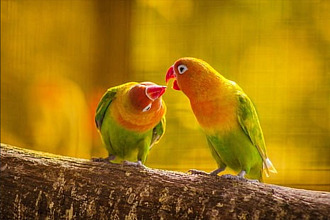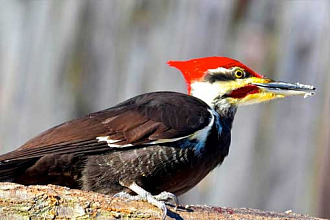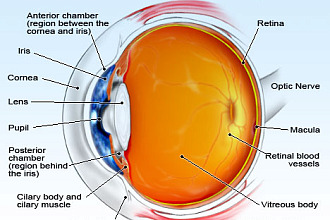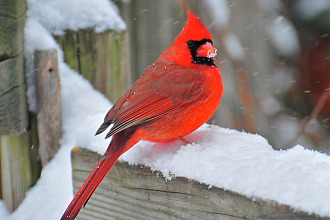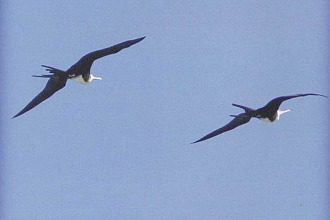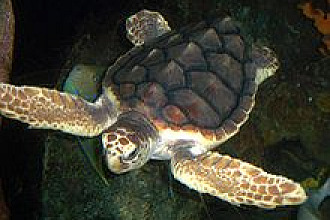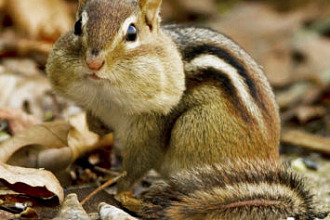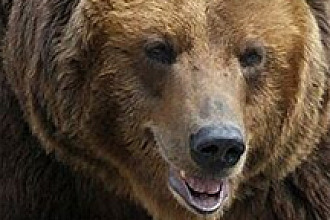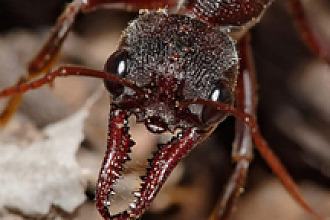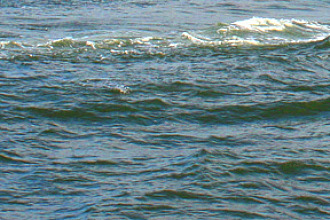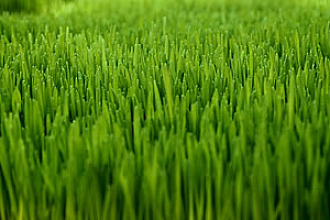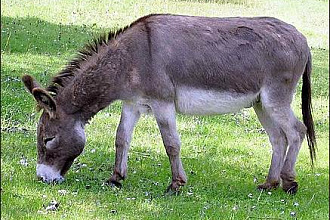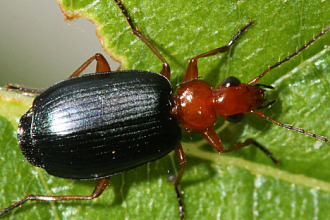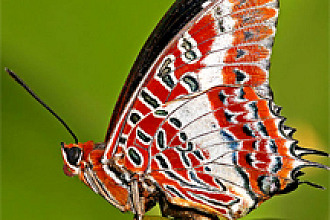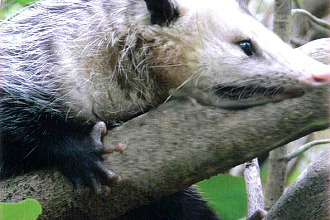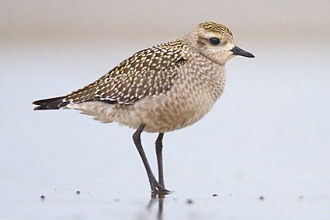A female coyote chooses whom she will mate with - sometimes her choice is unwise! But then there are badgers, whose life role can change by a coyote's wise choice!
A Coyote looks a lot like a medium-sized collie dog. When the male coyote's mate is in gestation (carrying growing baby coyote pups in her womb) he brings her food and, not by accident, after their pups are born, he brings food for their babies as well. He also stands guard over their "den" where mamma and pups stay until the pups are old enough to go outside. We can add a footnote here: Mama coyote evidently doesn't trust her mate with their pups. Not by accident mama coyote doesn't allow daddy coyote to step a foot inside the den. When he regurgitates the food he brings for the little ones born blind, he must do so from the doorway. He seems to well understand that he is not allowed inside, so there is no argument, and he "does as he is told." Now there are major differences when referring to a male domestic dog who crosses (or breeds) with a coyote mom. Their pups are called coydogs. Not only is their name different, but there is also a difference in the survival rate of coyote pups and coydoq pups. Domestic dogs and coyotes all belong to the same "canidae" or dog family (scientifically speaking) but few coydog pups survive. Researchers have come to understand why.: When a domestic dog is the father he does not have an instinct to help feed the mother during gestation nor to bring food to mama and their coypups after birth. Because of this, the mother is weakened and coypups are not fed adequately. Nor does the domestic doggie-father have within him the instinct to "stand guard." It appears their Creator didn't create them with the instincts of the wild coyote. Perhaps it was never in His plan to have them cross in breeding. One thing we know: few coydogs make it through the first year of life!
Regular coyote pups themselves only have a maximum 20% survival rate through their first year because coyotes in general are known as predators to ranchers and others, so humans seek them as prey and enormous numbers are deliberately—even legally—killed. So one might ask how come there are still so many coyotes in existence, when so much poisoning and hunting goes on?
Researchers have found that not by accident the more coyotes are killed, the more a response is triggered within the coyote population so that more coyote babies are produced than usual in their once-yearly birthing cycle! It is clear that a God-given solution kicks in when populations are diminished. The same thing happens when other conditions give clear indication as to food availability. When there is a drought, coyote parents, not-by-accident, produce less offspring. But in a year that food is plentiful, not by accident a much larger batch of pups are born! Pups arrive in the late spring about 63 days after breeding. How does the parent know—over two months ahead of time—whether there will be a larger or a smaller food supply? More Creator-given not by accident wisdom it seems!
Another fascinating insight into these most adaptable, skittish-toward-humans, super-wise-but-wary members of the dog family: They love to chase, catch and eat prairie dogs and ground squirrels, for example. (However they do eat whatever is available because they are omnivores—not only eating meat, but also fruit, beans, veggies, flowers and insects etc.) In catching running-away prey it is not uncommon for researchers to find a coyote speeding 40 miles an hour over the ground and if need be making a 13-foot jump to pounce upon their prey—or leap over an eight foot fence or actually climb a 14-foot cyclone fence! But many times a creature being chased does escape the mad dash of their coyote predator by diving down into the safety of the nearest hole or burrow—with its maze of underground corridors. Now the coyote is smart, but he does not have the tools of a badger, with its 11/2 to 1 ¾ inch-long claws at the end of its front toes, so not-by-accident the badger digs rapidly! The wiley coyote, who chases small prey of any type for his lunch, figured out that while the badger might be tasty itself, it better serves the immediate need of the coyote's empty tummy as a companion on the hunt.
Researchers have watched the coyote deliberately develop a hunting relationship with the badger that seems to meet both of their hunger needs. The badger has much success when it digs 10 feet in a matter of seconds, then dives down under the ground after a prairie dog or squirrel which thinks it has reached safety by escaping into a hole. Before the prey knows what has happened, the badger can often grab him, dispatch him with a quick bite, and consume him right there under the ground. The waiting coyote lost that one—but the next time he and the badger are romping along, and the running prey dives into a hole—the badger digs after him again. But perhaps this time his scurrying prey finds another corridor as an alternate escape route underground, gets away from the badger, then not yet sensing safety, comes popping up and out of the ground. The waiting coyote immediately pounces and it is his turn for a meal. Researchers have found the success percentage in the hunt increases by a third for both the badger and coyote when they hunt together. Often diligent researchers have observed the same coyote/badger pair work together successfully for well over an hour!
Incidentally, a few researchers have observed these wisely-developed not-by-accident teams actually at times appearing to come close to a cautious friendship. The furry badger accepts a role-change from being a "target" of the hunting coyote to becoming a "partner" and even playmate when they both have their tummies full and decide to just romp together. I read a report of one resting its head on the other, and licking its face. But more evidence is needed to actually show just how far their teamwork goes. Indian lore for a long time has included references to the way this unusual partnership in hunting conserves energy for them both. And we already have demonstrations of the survival adaptions of the elusive coyote who manages to accommodate all kinds of weather and living conditions. But the evidence given by the lone coyote of his not-by-accident seeming capacity to weigh from cause to effect the advantages in partnering with the badger—a creature of another species—rather than consuming it as prey—is reason for downright respect from us all!
It will be thrilling to learn, when we get to the New Earth soon, about the Creator's original plan in creation. And the day will come when we'll see that God never intended for any of His creatures to be anything but friends! And that will include us humans, too!
"NOT BY ACCIDENT" (c) Juanita Kretschmar is used by permission and was first published in newsletters about A Key Encounter, a Key West, FL, Creation-based, educational tourist attraction. Go to www.akeyencounter.org for additional information, To receive the free newsletter write: AKE, PO Box 177, Big Pine Key, FL 33043
Picture originally found here








